For a perfect fishing combo you also need a reel! Take a look how to choose the best spinning reel for your rod.
They say that a fisherman is only as good as his rod.
With that in mind, Outdoor Empire set out to find the greatest rods on the market. We know everyone fishes in different ways, whether it’s casting out into the surf, baitcasting off the back of your boat, or spinning for bass at the lake.
However you like to fish, our fishing rod buyer’s guide has got you covered.
The 12 Top Fishing Rods of 2021: Outdoor Empire Reviews
These are our top recommendations for fishing rods in 2021:
- Best spinning: Take the Shakespeare Ugly Stik Tiger
- Best baitcasting: Take the Okuma CELILO Graphite Rod
- Best rod and reel combo: Take the PENN Spinfisher VI Spinning Combo
- Best for surf fishing: Take the Team Daiwa Surf Rod
- Best trolling: Take the Shimano Talora
- Best saltwater: Take the Shimano Sojourn 1-Piece Casting Rod
- Best for bass: Take the G. Loomis Conquest Mag Bass Casting Rod
- Best telescopic: Take the KastKing Blackhawk II
- Best portable/travel/backpacking: Browning Fishing Safari Travel Spinning Rod
- Best cheap: Take the Berkley Lightning Rod Spinning Rod
- Best for kids: Take the Ugly Stik GX2 Spinning Rod
- Best ice fishing: Take the Clam Outdoors Ice Team Professional Series
*Looking for a specific feature? Check out our quick-reference chart below:
| Product: | 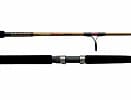 |  | 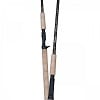 | 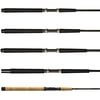 | 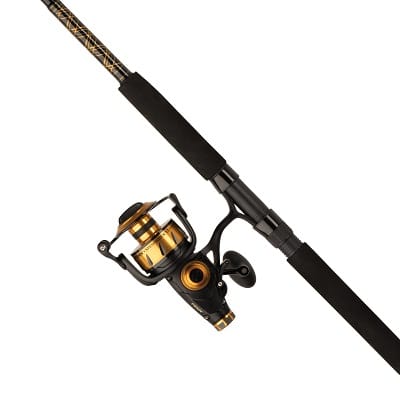 | 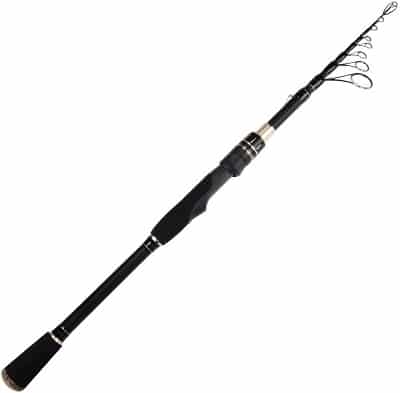 |
|---|---|---|---|---|---|---|
| Length | 7 feet | 8 feet | 8'6" | 8 feet | 7 feet | 8 feet |
| Line Weight | 14-40 lbs | 12-30 lbs | 10-20 lbs | 6-12 lbs | 12-25 lbs | |
| Power | Medium action | Medium action | Medium heavy action | Medium light action | Medium light | Mod Fast |
| Frame Materials | Fiber glass | Carbon graphite | Graphite | Graphite | Graphite | Graphite |
| Price | Check Price | Check Price | Check Price | Check Price | Check Price | Check Price |
1. Best Spinning Rod
Shakespeare is the undisputed king of spinning rods, especially if you’re looking for something lightweight and responsive. Their Ugly Stik line dates back to the mid-70’s, and ever since they were created they’ve been a fan favorite.
The Ugly Stik Tiger line takes everything you love about Shakespeare rods and kicks it up to the next level.
1. They are famous for their build process which uses a carbon fiber outer surface that’s been wrapped around a graphite core. This patented process produces rods that can bend all the way without breaking which is a relief when you hook a big catfish or northern pike.
2. The Tiger line in particular is built to stand up against freshwater gamefish that loves to fight hard. They all come with:
- reinforced rod tip
- premium stainless steel
- graphite reel seat
Most people think of Shakespeare spinners as the rod of choice for inland fishing, but Ugly Stik Tigers are great for marine spinning too. They’re tough enough to handle big water gamefish, while still being responsive to make catching panfish a lot of fun.
You just won’t find a better value than these fishing sticks anywhere.
2. Best Baitcasting Rod
There was a time not so long ago when using a baitcasting reel was more of an art than anything else. But now modern reels have magnetic brakes and anti-reverse features that make casting easier than ever.
A great baitcasting reel isn’t enough, you need to have an outstanding rod to go with it. The best on the market is the Okuma CELILO Graphite Rod.
Okuma CELILO Graphite Rods are made especially for tournament pros but they’re priced for everyone. They are designed to be able to throw heavy baits and catch big bass.
1. These rods are engineered to hit the sweet spot between power and feel, optimizing the length of your cast while still providing the responsiveness you need to feel every nibble.
2. They are marine-rated, making use of stainless steel and ceramic composites so you can use them whether you’re standing on the surf or fishing at the lake.
3. They are tough and durable. It gives the power you need in order to pull a big catch off the bottom without worrying about whether or not your rod can take the stress.
3. Best Rod and Reel Combo: PENN Spinfisher VI Spinning Combo

Having the right combination of the perfect rod and a quality reel is critical to catching fish, and the Spinfisher VI Spinning Combo delivers.
First, you get the newest generation Spinfisher reel with powerful HT-100 drag with IPX5 rated seals, CNC gears and 5+1 sealed stainless-steel bearings.
Next, there is the factory-paired black graphite composite rod. PENN Dura-guides, an EVA handle, lengths from 6.5 feet to 10 feet and variable action speeds combine to create a rod that is both comfortable and compatible with any fishing technique.
PROS
- Using a factory-matched rod-and-reel combination takes the guesswork out of getting the perfect setup.
- Spinfisher VI reels are rated as one of the best year after year.
- Graphite composite offers an excellent combination of strength and durability
- 8-foot and 10-foot models come in a two-piece design for easier transportation.
CONS
- A bit heavier than straight graphite designs
This is the perfect combination for the inshore or offshore angler who knows the importance of a good matched rod and reel, but who does not want to spend time doing the research or learning through trial and error.
Unpack, rig, and hit the water knowing that you have one of the best reels on the market.
4. Best Surf Fishing Rod
There’s nothing like standing on the surf and casting way out into the waves, hoping to hook a striped bass or redfish. The next time you hit the shore, take one of Team Daiwa Surf rods with you.
They’re made of a low-filler, high-glass carbon fiber method that:
- reduces weight
- increases sensitivity
- boosts the length of your casts
You’ll be able to feel every nibble and get out further from the shoreline than you ever have before.
Frankly, Team Daiwa Surf line is just about perfect in every way for shoreline fishermen. You can look at these rods and see the quality and craftsmanship that went into making them.
1. Daiwa makes them long and strong, length ranges from 7 feet up to 12 feet. The longest rod can easily cast a 16-ounce tackle way out into the ocean. If you’re a serious surf angler, you’ll appreciate the quality of these rods.
2. Everything down to the ring guides has been engineered for long casts and big catches.
3. The reel seats are made especially for Daiwa out of advanced composites from Fuji so they’re tight and secure.
If you manage to hook a trophy fish, you won’t have any problems getting it to the shore even in choppy surf. They makes some of the best offshore fishing rods around.
Best Surf Rods in 2019: A Buyer’s Guide ( In-Depth Reviews )
5. Best Trolling Rod: Shimano Talora
Shimano’s tough Talora trolling rods are the best on the market. They’re a surprisingly versatile line of rods, equipped to handle whatever you throw at them. It offers a selection of 6 in this series, ranging from 7 to 10 feet long.
So whether you prefer to run deep with a downrigger or slay salmon using a dipsy diver, there’s a Talora rod ready to do the job.
1. They’re right in the sweet spot between affordability and durability.
2. They’re built using TC4 HM rod blanks, which Shimano creates out of lightweight and responsive carbon fiber composites.
3. They also use built-in aluminum oxide line guides which are fused directly to the body of the rod for increased durability.
The entire line of Shimano Talora rods are the gold standard for affordable freshwater trolling.
They’re built to take the sort of constant abuse that comes with dragging your line behind the boat. Everything from the reel seats to the grips are reinforced and overbuilt so they won’t break if you hit a snag.
6. Best Saltwater Rod (Baitcasting): Shimano Sojourn 1-Piece Casting Rod
Saltwater anglers need a rod that will handle anything that the ocean can throw at them. From big fish to harsh conditions, fishing in saltwater is tough on both anglers and their gear. The Sojourn 1-Piece Casting Rod is up to the task.
The graphite composite blank provides the backbone needed to pull big fish to the boat while remaining sensitive enough to detect even the lightest bite. The low-profile oxide guides allow your line to cast smoothly, withstand the wear and tear of braided lines and can withstand harsh saltwater.
Plus, the natural cork handle provides a comfortable, slip-resistant hold even when wet. A redesigned reel seat will ensure your favorite reel stays put even during the hardest fight for your next trophy.
PROS
- A perfect combination of durability and sensitivity
- Low-profile oxide guides are resistant to saltwater corrosion
- Traditional cork handles are both fashionable and comfortable
- Backed by a 1-year warranty
CONS
- One-piece design is more difficult to transport
- Lack of large fighting butt does decrease comfort during longer battles
Saltwater anglers in search of an affordable rod by a tested manufacturer will enjoy the opportunity to get a high-end rod as a lower-end price.
7. Best Bass Rod
You can’t get the best bass rod available without spending a fair amount of money, but some high-end rods – like the Gary Loomis Conquest Mag Bass Casting Rod – provide such incredible value that you’ll likely forget all about the expensive price tag.
If you’re new to bass fishing, you might want to start out on a spinning rod, however.
Available in lengths ranging from 6.5 to 7.5 feet in length, you can opt for medium, medium-heavy and extra-heavy powers.
However, all of the models available feature fast action, which works well for most common bass-fishing techniques. And no matter whether you prefer fishing with 1/4-ounce lures or 1 ¼-ounce lures, there’s a Conquest Mag model to suit your needs.

2. In addition to the high-quality blank used as the rod’s foundation, the Gary Loomis Conquest Mag also features some impressive components, including Fuji Torzite guides and full cork grips.
8. Best Telescopic Rod
Traveling anglers are often at a disadvantage when it comes to selecting a rod, forced to choose between portability and quality. But KastKing has changed that. The Blackhawk II offers both, promising a six-piece telescopic rod that performs like a solid blank.
Using Toray carbon fiber layered in a unique manner, they have designed six individual pieces that collapse into one other for easy transportation. When extended, each piece locks securely into place and performs like your favorite single-piece rod.
The hook holder also allows your rig to remain intact when collapsed for quicker deployment. Reinforced reel seats, comfortable EVA handles and multiple floating lines guides further ensure comfort and performance in a variety of applications.
You also get a choice of 14 different lengths and actions.
PROS
- High-quality construction with top-of-the-line materials
- Single-rod performance in an easy to transport package
- Available in a wide range of sizes and actions
- Available in both spinning and casting models
- Backed by a 1-year warranty
CONS
- Users have reported a few cases of tips breaking
If you are an angler on the go who needs a rod that will travel well and perform even better, the Blackhawk II deserves a spot in your arsenal. Even the 10-foot-10-inch surf model will fold small enough for any backpack or suitcase and weighs less than 1 pound.
No matter where you find yourself, you will never be without a fishing rod.
9. Best Portable/Travel/Backpacking Rod: Browning Fishing Safari Travel Spinning Rod
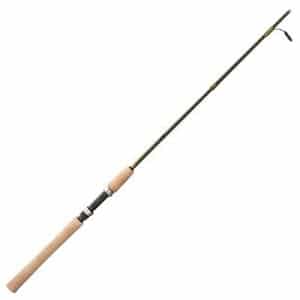
But few of these can compete with the Browning Fishing Safari Travel Spinning Rod, which is the best option in the portable rod category.
Featuring a three- or four-piece design (depending on the total length), the Fishing Safari Travel Rod is easy to break down and carry, no matter where your travels take you.
It also provides the kind of sensitivity that serious anglers demand, and it is available in several models, which provide different power ratings and actions.

2. A protective rod sock and hard travel tube are both included to help keep your rod safe while you travel.
10. Best Cheap Fishing Rod
Budget-limited anglers often fear that they will have to select a poor-quality rod and simply make the best of it.
However, there are a surprising number of affordable yet high-quality rods on the market, like the Berkeley Lightning Rod Spinning Rod.
Made from a 24-ton, multi-modulus graphite blank, the Berkeley Lightning Rod Spinning Rod provides plenty of quality despite not costing very much money at all.
Berkeley’s Lightning Rod line includes rods ranging from 5- to 7-feet in length, and with power ratings ranging from ultralight to medium-heavy. You can also select from several different actions, ranging from extra-fast to moderate.

This ensures that the rod won’t only work well on the water, but that you’ll enjoy using it too.
11. Best Rod for Kids
Although a lot of parents are inclined to pick up a very low-cost rod for their kids, it is a good idea to avoid the bargain-basement and look for rods that provide a fair bit of quality.
And if possible, you should always look for the most durable rod possible, to help stand up to the wear and tear kids often inflict on their rods.
The Ugly Stik GX2 Spinning Rod is a great choice, and it’ll suit youngsters fishing for just about any common species, from crappie to panfish to bass.

2. You can choose from several different powers and actions, to help provide your child with the best possible rod for his or her needs and skill level.
3. These rods feature Ugly Tuff Guides, which enable very long casts, one-piece stainless steel inserts and Ugly Stik’s classic Clear Tip.
12. Best Ice Fishing Rod
Just because you’re fishing through the ice doesn’t mean you don’t want a high-quality rod, like one of the Clam Outdoors Ice Team Professional Series line.
These rods feature hyper modulus solid graphite blanks, and their action is hand-crafted by Ice Team Pros, so you know that your rod will perform as you need it to once you hook a big fish.

If you are fishing for crappie, you’ll want to go with the 25-inch model, while those targeting bluegill or walleye, or perch will want one of the 26- or 28-inch-long models.
And if you are only interested in catching the biggest fish swimming under the ice, you’ll want to go with the special 36-inch-long model, specifically designed for anglers targeting giants.
If you just want a good all-around ice fishing rod, we’d recommend the 26-inch-long model designed by ice angler Keith Kavajccz, which is a one-piece rod that has a medium power rating.
Understand These Concepts Before Buying
There are a lot of technical factors that you have to look into when choosing the perfect gear. Before you sit down and pick your next fishing stick, here are a few important things to keep in mind.
Casting and Rod Length
It’s important to understand the relationship between the length of a rod and how far you can cast your line. You see this a lot in surfcasting rods, which can be as long as 12 feet.
Casting distance has all to do with the acceleration of the tip of your rod and the weight of your terminal tackle. But, being great at these 6 casting techniques also helps.
Long Rods, Long Casts
To begin with, think of the fishing rod being a whip. Everyone knows that a whip makes that cracking sound because the tip of it breaks the sound barrier. The longer your rod, the faster your terminal tackle accelerates.
In general, long rods make for longer casts. But there are drawbacks to having the longest rod on the lake:
- You need more room to cast.
- You need more practice since releasing your line at the right time is tougher when you’re using a big pole.
Weight Matters
The weight of your terminal tackle, that is everything tied to the end of your line, also plays a big role in how far you can cast.
If you paid attention in high school physics, you know that force is mass times acceleration. More force equals longer casts so it follows that heavier tackle travels further. Anyone who has ever casted a line will understand that concept by feel alone.
Keep in mind that if you want to cast light tackle as far as you can, you need to pick a longer rod to compensate.
Power
Rod power is basically the weight or pressure that a rod can take for it to flex. Each rod power is specifically engineered to handle a certain range of lure weights and line sizes.
Anglers consider their intended line weight and lure test when choosing a rod. The lighter the line and lure is, the lighter the power should be for it to be handled efficiently.
Ultra Light and Light
Ultralight and light rods are a great choice for freshwater gamefish and panfish.
They’re extremely flexible and responsive, and give you a great feel when your bait bumps the bottom or a fish starts to nibble. These rods bend right over as you fight and lift the fish up off of the bottom.
Ultralight and lightweight rods are typically used in freshwater ponds, lakes, and streams. You’ll see some lightweight surfcasting rods for marine fishing but in general, saltwater gear tends to be heavier.
Best For
- Lightweight lines up to 8 pounds
- Water with light cover since low power rods struggle as you pull your tackle up through the weeds.
Medium
Medium power rods are great for a variety of fish, from smaller saltwater gamefish to heavier freshwater species like catfish, trout and pike. Obviously, they aren’t as responsive as ultralight rods but they offer good versatility.
A lot of fishermen prefer medium power rods because they split the difference between the stiffness of heavier gear while still offering some of the responsiveness of light power rods.
They’re a good choice if you’re looking for an all-around rod that you can take with you just about anywhere. While they’ll struggle if you’re hauling in salmon, for the most part, medium power rods will handle most freshwater and offshore gamefish.
Best For
- Fish that run up to 20 pounds
- Light to moderate weedy cover
Medium Heavy
These rods have a lot of the versatility of medium power gear but they are noticeably stiffer. That translates to increased lifting power for big fish. The tradeoff is that they take just about all of the fun out of hooking into a perch or bluegill.
A lot of saltwater rods are medium heavy, and they’re the rod of choice for anglers in search of striped bass, salmon, and big catfish.
Best For
- Surfcasting or trolling in saltwater
- Fast waters and some fishers that like to take big carp out of weedy rivers swear by them.
- Usually recommended for fish up to about 50 pounds, although hooking a catch that big is a struggle for cheaper rods.
Heavy
They range from the biggest surfcasting gear to the sort of ultra-stiff rods you need to take tuna, sailfish, or gar. They’ve got a ton of lifting power and if you hit a snag underwater, you can easily pull the weeds right up off of the bottom.
Heavy power rods are some of the most durable. A lot of the top models use specially reinforced types of carbon fiber to make sure you don’t accidentally snap your tip.
They give you the least feedback but considering the sort of fish you’re usually catching on heavy gear, you’re not likely to miss it when a sailfish takes the bait.
But if you head out to the lake for a largemouth, better bring a bobber because you might not even see your rod twitch when you get a bite.
Best For
- Lines up to 150 pounds but some specialty wireline rods can be rated above and beyond.
Action
Rod action is where the rod bends along the blank. Faster action rods flex roughly 1/3 from the tip, moderate rods bend in the middle part, and slower rods flex on the blank’s butt section respectively.
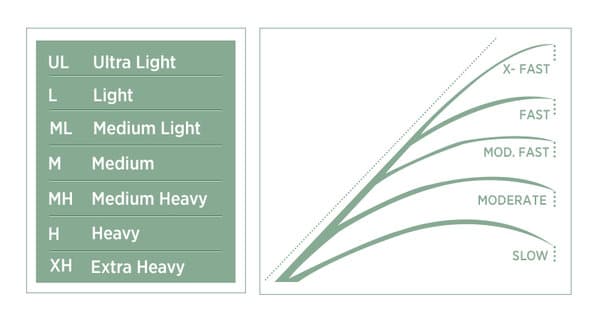
Watch this video to have an overview of how rod action and power go hand in hand.
https://www.youtube.com/watch?v=S9EnmzLErj4
Frame and Materials
Your rod is built around its frame, and its materials have a huge impact on performance. It’s not just about strength. Your rod’s material plays a big role in sensitivity and lifting power.
Fiberglass
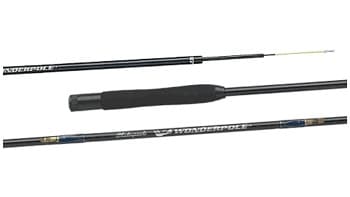
There was a time, about 50 years ago, when fiberglass rods were all the rage.
But today, you’ll only find fiberglass in different sorts of rod. The most common variety of fiberglass rod is usually a cheap one. But don’t get the wrong impression. Sometimes it is the best choice, not just the most economical one.
Compared to other modern materials used to make fishing rods, fiberglass is weak. That means fiberglass rods are thicker than average along the spine. That’s not necessarily a bad thing, especially if you’re looking at medium-heavy rods.
They work fine when you’re trolling. Some people even prefer them for fishing spoons because stiff fiberglass telegraphs small movements better than other materials, leading to a jerkier and more natural presentation.
Another benefit of fiberglass is that it’s tough. Graphite and carbon fiber is strong but brittle. If you’ve ever dropped an expensive rod on the rocks or bounced one around on the bed of your truck, there’s a good chance that fiberglass would have fared better.
Shakespeare uses fiberglass cores in some of their rods for exactly that reason.
Graphite
Stay with me, because this is a bit confusing. Graphite is carbon fiber, but carbon fiber isn’t always graphite.
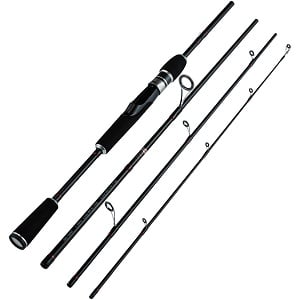
The difference comes down to fiddly technical details. Graphite is an older technology — it’s more rigid and brittle, and it’s a lot cheaper. Not as cheap as fiberglass, but cheaper than carbon fiber as we know it today.
The biggest difference between the two is that graphite is made a bit more crudely. You can get decent graphite fibers just by burning bamboo, which isn’t so different from how Thomas Edison came up with his light bulb filament in the 19th century.
Carbon fiber is made with a chemical process that produces ultra-pure, ultra-strong strands of carbon. Graphite isn’t.
That said, graphite rods are great. They’re lighter and more responsive than fiberglass. Graphite rods are tough enough to get years of use out of, as long as you handle them with care.
Your new graphite rod probably isn’t going to snap even if you hook a huge bass and bend it right over, your line will usually give out first.
If you’re going to buy a fishing rod off the shelf to take with you to the lake, you’ll be happy with graphite. But if you want something that’s going to last for 10 years, even if you use it every weekend, carbon fiber is better.
Carbon Fiber
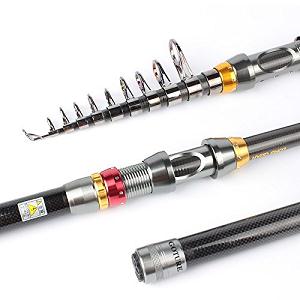
You can think of carbon fiber as an upgrade from graphite. Everything that graphite does well, carbon fiber does better. Your graphite rod is light, a carbon fiber rod of the same size is lighter. Graphite is responsive and flexible, carbon fiber is moreso.
But with the good comes the bad. Carbon fiber has all of graphite’s weaknesses, and it has them even more intensely. Carbon fiber is brittle, and it’s even more brittle when it’s cold. It has an extremely high strength-to-weight ratio, but strength isn’t everything.
The thing is, a carbon fiber rod isn’t going to break while you’re using it. It’s very good at being flexible but it’s going to break when you drop or crush it.
Multi-Material Composites
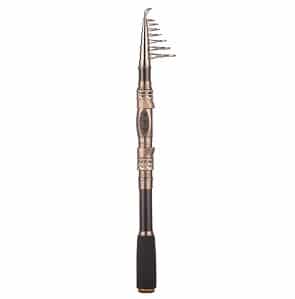
So, I’ve tried to be fair and not just write off fiberglass as cheap or graphite as inferior, because the truth is that they’re both good at certain things. Carbon fiber is pretty great but it has its weaknesses too.
Engineers know all that, and they get paid to think hard about how to work around them. Well, they came up with multi-material composites.
The best rods on the market use a little bit of everything, in an intelligent way, to make a rod with more strengths and fewer weaknesses. I wish I could tell you more about how they do it but everything is patented for the most part.
Some of the newest fly fishing rods, which have to endure incredible stresses because of their length and relative thinness, are made out of boron-based composites mixed with carbon fiber and plastic resin.
If you’re in the market for one, expect to pay a lot. It’s probably worth it.
Rod Guides and Rings
Rod guides are the little rings on your pole that the line runs through. Sometimes they’re important because you need hefty guides to stand up to fighting heavy fish, or they need to be specialized to handle wirecore line.
But usually, they’re only important because you broke one and need to replace it.
Ring Frame Materials
When you’re shopping for bluewater fishing gear, keep these tips in mind.
1. Pay special attention to the material that your ring frames are made of. Rod guides can corrode if they’re not built with the right material. On most poles, you can cut off your old, broken rings and replace them with new.
2. Look for rings that are marine-rated and avoid chrome coatings. After enough time spent in the salt spray, unless they’re very high-quality, they will start to pit and corrode.
3. Stainless steel works well enough, and high-end marine poles use rings made out of solid titanium. The lower-end stuff typically only coat their steel with it and eventually scratch through the coating.
Ring Feet
Ring feet come in single-foot and double-foot styles. But at the end of the day, all that really matters is how much material is supporting the ring and making contact with the rod.
Thick single-foot rings stand up to more abuse than thin, wiry double-foot rings. The proof of this is in really heavy bluewater fishing equipment which almost all make use of extra thick, single-foot guide rings.
Ring Liners
The ring liner is important because it’s the bit that makes contact with your line. There are more liner materials than you might think, each one allegedly better than the rest:
- alcolite
- nanolite
- titanium oxide
- aluminum oxide
- silicon dioxide
- silicon nitride, and the list goes on
The most important thing is to pick something that’s marine-rated if you’re going saltwater fishing, and find a ring that is advertised as working with the line weight you prefer. There are also options like tangle-free and boating liners which generally work as advertised.
I don’t think any fisherman is going to double-check that he has the special liners installed before he steps out onto the boat. But if you’re buying new equipment, then it can’t hurt to get exactly what you need.
Roller Guides
The one last, really important distinction that you’ll notice are roller guides.
Anglers prefer these when they’re reeling in huge fish. They’re built with a bearing and roller to guide your line through the rings. Roller guides really do work, and a lot of commercial fishermen use them for line-caught tuna.
But the good ones are so expensive that you’ll only want to look into them if you’re regularly going out deepwater trolling or doing a lot of fishing with stiff lead-core or wire line.
Attention To These Factors Too

Finding the perfect fishing pole is only a small part of your overall experience. Don’t forget these important details when you’re figuring out which rod is the best fit for your fishing method.
You may also want to know how to choose a best rod holder along the way.
Getting to Your Spot
Just a quick word of advice here, coming from a fisherman who likes to hike into his spot and then camp out by the lake to catch catfish at midnight: consider the weight and bulkiness of your gear.
Fishing rods love to snag on trees and get hung up, sometimes setting a hook deep into the bark or a clump of leaves and stopping progress until you can untangle.
Even if you drive in, can you fit a one-piece 12 feet bluewater pole on the bed of your truck? Think about how you’re going to get to your spot and pick the gear that works with your plan. Bigger isn’t always better.
Tackle Weight
Don’t forget to take the weight of your tackle into account.
A lot of freshwater fishermen, especially the newer ones, only think about casting into a pond. If there’s any chance that you plan to go river fishing, you need to fight the currents and that means heavy sinkers.
Ultralight and lightweight rods have weight limits when it comes to terminal tackle, and sometimes they’re lower than you’d expect. Plan ahead. Take into account the sort of fishing you’re going to do before you buy your next rod.
I’ve gone out of my way to point out that the fishing poles aren’t just one-offs, they come in a whole series of different lengths and powers. Pick the right model and if there’s any doubt, get something a little heavier than what you need.
Exceeding the limit on your gear is a great way to snap your pole while you’re casting. The acceleration stresses involved in casting are actually pretty impressive, and hanging a quarter-pound lead off of the rod’s end really compounds them.
There’s nothing worse than breaking your favorite jigging pole because you loaded it up with river weights for the walleye run.
It’s reasons like this that you might think about getting a whole collection of rods going, if you don’t already have one.
Freshwater vs. Marine
Fishing poles can be marine-rated too. A lot of people only think about reels. Sure they can really suffer from the salt spray, but buying the right rod is just as important.
Typically, you’ll see two major points of failure if you try to use a freshwater rod in the ocean.
The first thing that can happen is corroded guide rings. A lot of cheaper rods coat steel wires with acrylic. Even expensive rods sometimes use thin titanium coatings which look great and sound fancy but start to corrode as soon as you scratch them.
Busting off a guide ring might not end your fishing trip, but then again it might.
The other place you’ll see corrosion is in the reel seat. This is becoming less common as more manufacturers switch to graphite even for their freshwater rods. Graphite is cheap and easy to machine these days.
If you have an aluminum rod seat, it won’t rust up but it will attract salts and corrode galvanically.
Now, that’s not to say that you need to go out and buy a new gear if you get an unexpected chance to do some saltwater fishing. Just make sure to:
- Wash down your rod and reel after you use them.
- Oil up the bearings when you get home
As long as you don’t make a habit of using freshwater gear in the ocean, you’ll be fine. If you do, you have the option to either buy a saltwater rod and reel combination unit paired by the manufacturer or buy them separately if you are willing to do the research.
Leading Fishing Rod Brands
Finding your favorite brand can be a revelation for a fisherman. Even though every company carries a bunch of different product lines, they tend to have similar profiles. Here’s a quick rundown of some of the most popular manufacturers.
Shakespeare
I don’t think it’s too much of a stretch to say that most inland fishermen get their start on Shakespeare rods.
They make some of the best ultralight and lightweight gear on the market, and they do it for a great price. Their products are perfect for just about any of the smaller gamefish.
That said, Shakespeare really isn’t a choice for marine anglers. Their rods just don’t hold up as well when you’ve got a big fish on. They tried to counteract that a bit with their Tide Pool and Intercoastal series.
For the most part, Shakespeare rods are best at lightweight freshwater fishing. But that doesn’t mean that they don’t bring anything impressive on the table.
When you hook even a small fish on an ultralight rod, the tip bends right over and you have a fight on your hands. Not too many manufacturers can make catching bluegill, perch, and crappie as much fun as getting a largemouth on the line, but Shakespeare pulls it off.
Shimano
You can count on Shimano rods to use some of the most high-quality, high-tech materials on the market. The company got its start manufacturing lightweight bicycles and golf equipment, both of which made use of carbon fiber and cutting edge alloys.
They brought the same attention to detail to their fishing rods which has given them a stellar reputation when it comes to performance and reliability.
You can expect to pay more than usual for Shimano rods, but a lot of professional anglers swear by them. They make a wide range of freshwater and marine rods. They’re best known for their high-strength, high-power offerings.
If you’re looking for an extremely tough rod, that’s where Shimano really shines. The company also produces tournament-grade bass poles that the pros really seem to love but they pay for the privilege.
One common problem with Shimano rods is sensitivity.
You’ll find that you have to spend a lot of money in order to buy a truly responsive gear. Some of that is the focus on heavy marine fishing that the Japanese-based company has always had. But a lot of it is the stiff, high-grade carbon fiber they use to make their rods.
Okuma
If you’re looking for bluewater gear on a budget, Okuma is the first manufacturer that you should check out.
This Taiwanese-based manufacturer delivers an excellent product for a great price. They have a good range of products, from entry-level to professional, and everything they make exudes quality.
Unless you’re buying their high-dollar gear, Okuma rods tend to be just good enough. They’re not specially outstanding in any way but they are a good value.
In the past, people complained that they had some problems with wobbly reel seats. But recently, they already corrected their mistakes and generally deliver solid gear.
Okuma really shines when it comes to medium-heavy and heavy rods. They’re what you want to have in the boat when you’re going after salmon, tuna, and sailfish.
As long as you’re looking for a stiff, snappy rod, you’ll be happy with what Okuma has to offer. They also make some really great, heavy-duty reels that can be had for less money than you might expect.
Penn
Penn rods and reels are made for trolling, but they’re capable of a whole lot more.
They make outstanding saltwater gear, but you should expect to pay. Unlike a lot of other companies that focus on marine rods, Penn has some excellent lightweight offerings too. Their line of boat rods are some of the best on the market, hands down.
That’s not to say Penn is only a saltwater manufacturer, they also offer top-quality freshwater rods too. Their Battalion line of trout rods are exactly what you want to have on-hand when you hook into a big, feisty rainbow or brookie.
Bottom line, they’re a solid manufacturer with a history of turning out quality products. They’re an innovator and they release new gear more often than a lot of other companies do. It’s hard to find anything bad to say about Penn equipment, so I won’t.
ABU Garcia
I’m not sure either company would appreciate me saying so, but ABU Garcia is basically a high-dollar Shakespeare. They do everything that Shakespeare rods do; but they generally do it a bit better, and charge you a little bit more for the privilege.
ABU Garcia also makes some outstanding tournament-quality reels. They made a name for themselves in the 1980’s by turning out some of the finest spinning reels on the market.
Their rods are just as good as their reels. They are one of the first companies to offer solid titanium ring guides. In general, their products are excellent. ABU Garcia tends to focus more on freshwater products but they do have some saltwater offerings too.
For the most part, you should expect ABU Garcia gear to be responsive, tough, and refined. A lot of their rods look just as good as they perform and that isn’t always the case with every manufacturer.
If you’re looking for tournament-quality freshwater gear, ABU Garcia is a solid choice.
Daiwa
Daiwa has been around since the mid-1950’s, and they’ve been making products in America since 1966.
Since they opened, they have been making some excellent freshwater and saltwater fishing gear. They make outstanding surfcasting rod and surprisingly, they have a whole product line devoted to carp rods and reels.
One thing that Daiwa does, which a lot of people appreciate, is offer accessories along with their rods and reels. For instance, their 12 feet Longbow rods all come with nylon carrying cases. They’re also better than average at providing support and replacement parts.
If you do a little bit of research, you’ll come across stories from fishermen about their excellent customer service.
They make a ton of different rods and reels, offering up specialties like ultralight trolling rods and huge electric power-assist saltwater reels.
If there’s a criticism to be made, it’s that Daiwa has so many products available it can be hard to pick through and decide what you want to buy. That’s not a bad problem to have.
Other resources worth checking:





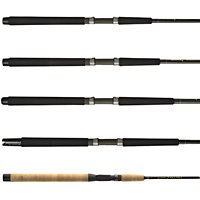





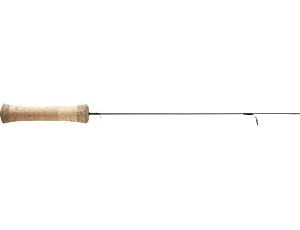
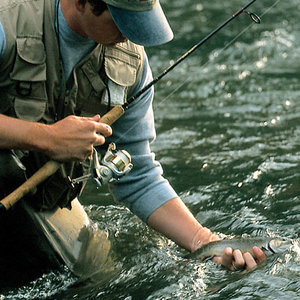


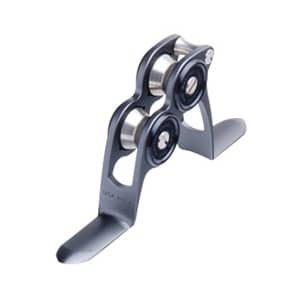
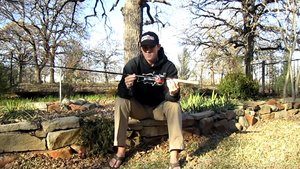
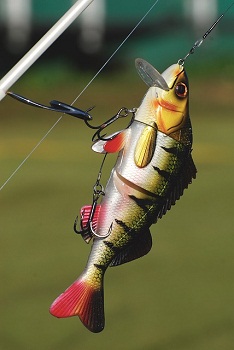
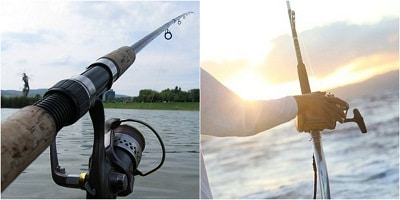
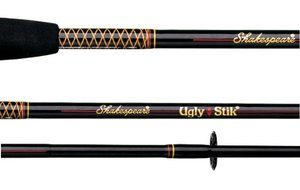

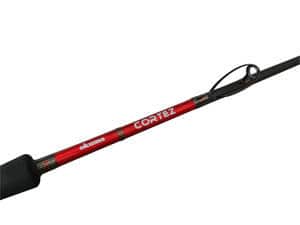

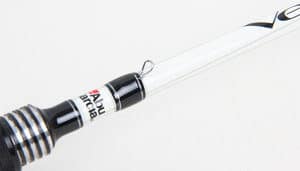
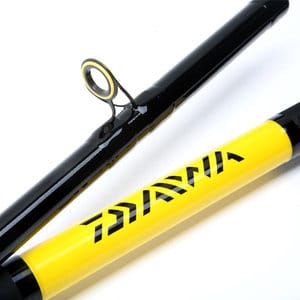
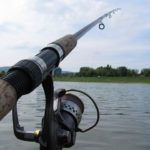

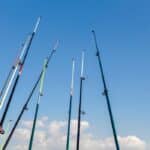


Comments are closed.